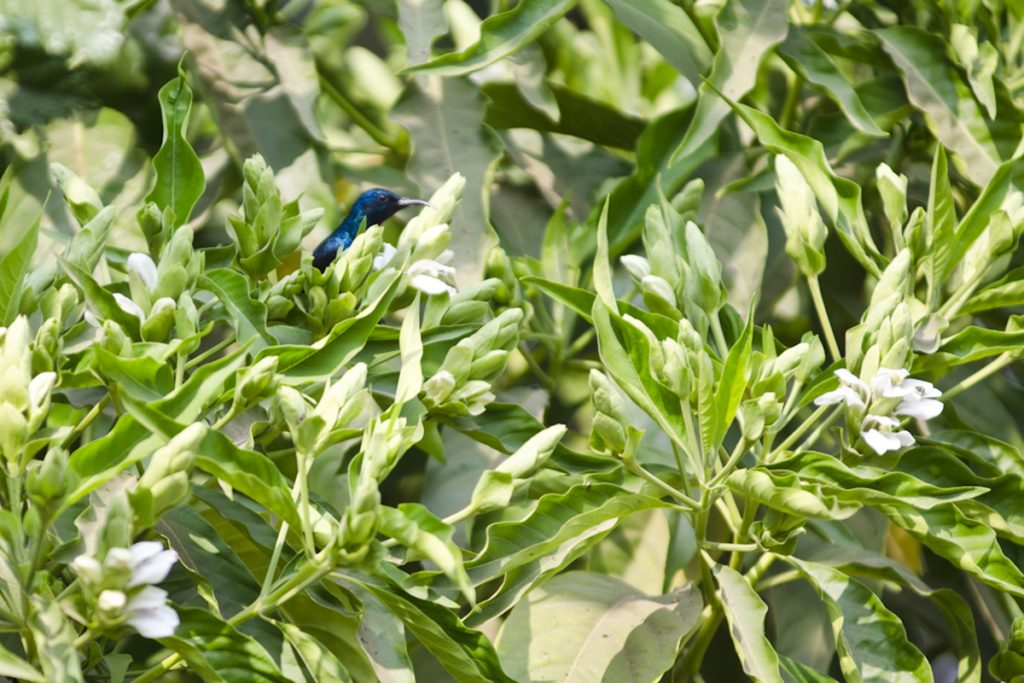
Although our regular blog series on the plants and herbs found in Sambhavna’s community gardens and their use in Ayurvedic medicine is currently on hold due to the Covid-19 pandemic, flora from the garden is still being used by staff at the clinic for cleaning and disinfecting equipment and surfaces. There are two main herbal solutions that are used regularly by staff and volunteers at the clinic:
1. Areetha solution: sapindus mukorossi, known as Areetha in India and colloquially as Soapberry or Washnut, is a species of tree native to the Indian subcontinent. In addition to having several important medicinal properties, its fruit, known as Soapnut, can be used as both a natural cleaner and an insecticide. The fruits are soaked in water for a full day, before being stewed in a pressure cooker until they are extremely soft. They are then mashed, the seeds are strained out, and the resulting pulp forms the base for an effective natural cleaning solution. At Sambhavna it is used for cleaning dishes and clothes, and in dilute form to wash floors. It has proved to be more effective than soap for these purposes and, although there has not been time or equipment for extensive testing, clinic staff believe it may be an effective disinfectant for clothes and surfaces that carry coronavirus. When preparing the solution for long-term storage, leaves of the lantana camara plant, known as Gu Phool in India, are added during the cooking process. There are three Areetha trees in the Sambhavna community garden, which together provide ample fruit for both medicinal and cleaning purposes.
2. Neem solution: azadirachta indica, known as Neem or Indian Lilac, is a species of tree in the mahogany family. Its leaves are used in Ayurvedic medicine to treat various skin conditions, including eczema, but also have anti-viral properties that make them an effective natural cleanser. Neem leaves are boiled (or solar cooked) in water until the water turns yellowish-green, and the resulting solution is used to clean floors and other surfaces. The anti-viral properties of the Neem tree mean it could also be of help in preventing the spread of coronavirus. There are several Neem trees in Sambhavna’s gardens, easily distinguishable by their uniquely patterned bark and delicate white flowers in spring.
In addition to their use in cleaning solutions, Neem leaves can also be combined with ocimum gratissimum (Wild Basil) and justicia adhatoda (Malabar Nut) to create an effective mosquito repellent. Neem leaves, basil and Malabar nut are ground into a powder, water and tree gum are added, and the resulting mixture is kneaded into a dough. The dough is then rolled into sticks, which when dry can be burned like incense. The smoke given off by these sticks drives away mosquitos and other insects, as well as giving off a pleasing aroma. Wild Basil and Malabar Nut can be found in abundance in the community gardens, and both also have important medicinal properties that make them staples in Ayurvedic medicine.
We are delighted that natural remedies continue to prove effective in maintaining community health at Sambhavna even during these difficult times. We would like to thank all the staff for their incredible efforts in continuing to maintain the clinic and its beautiful gardens. Our thanks also to Sathyu Sarangi, Managing Trustee of the Sambhavna clinic, for sharing this information with us. We hope to have more updates for you soon.


